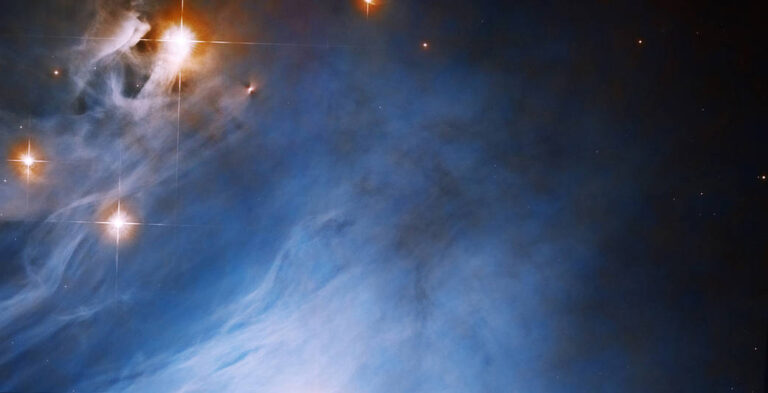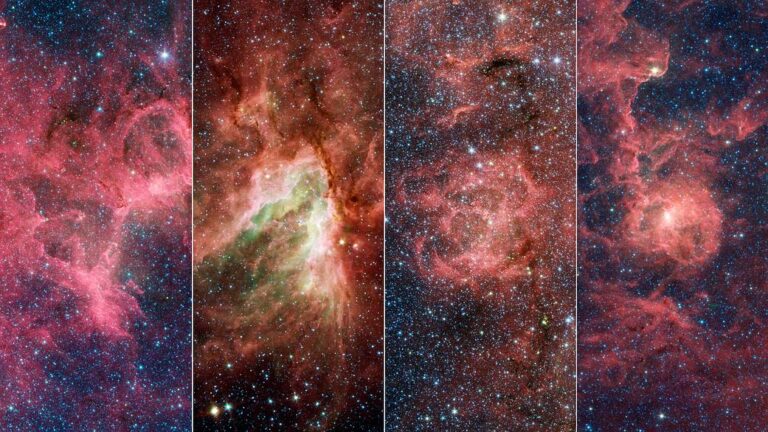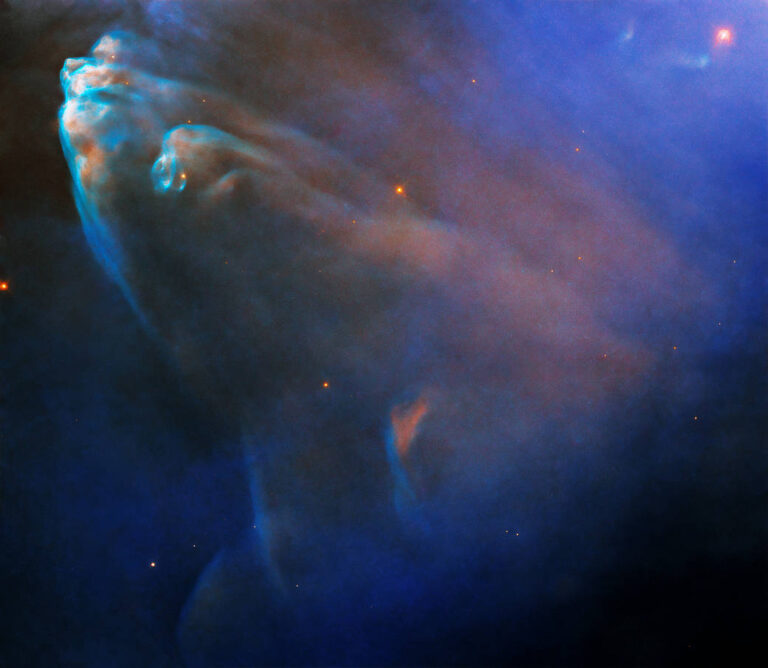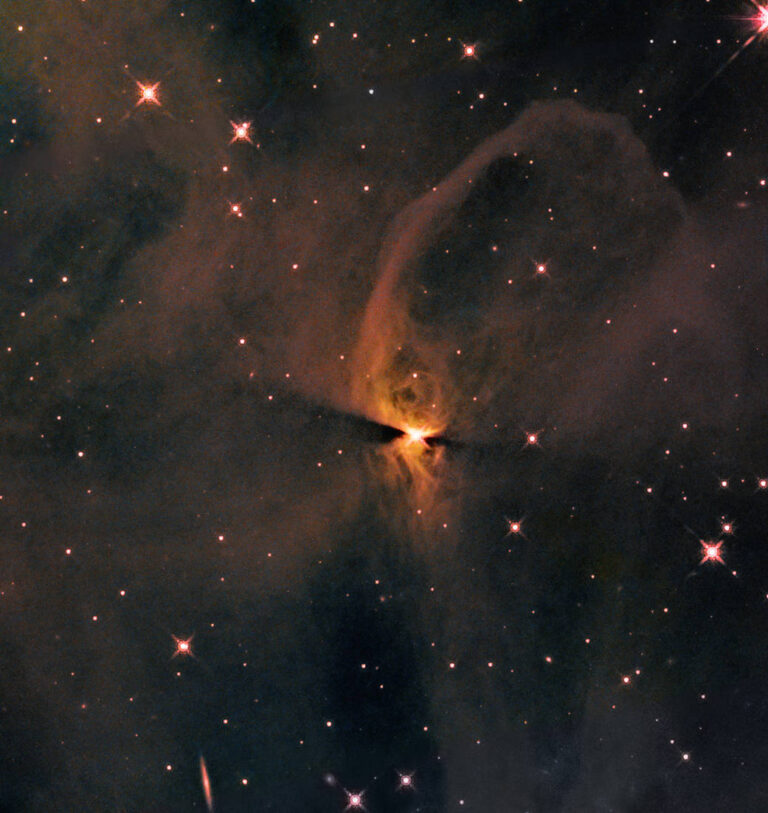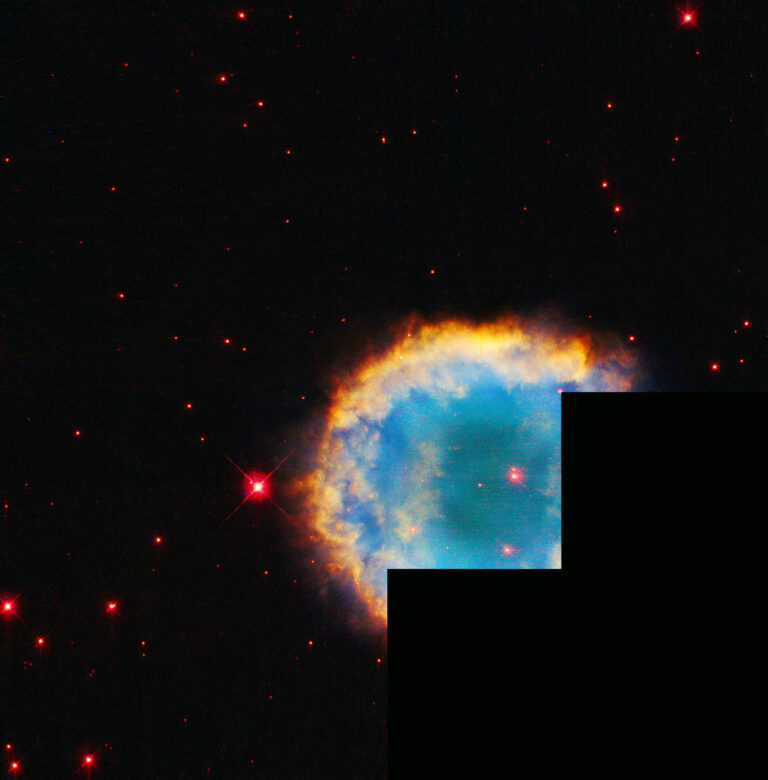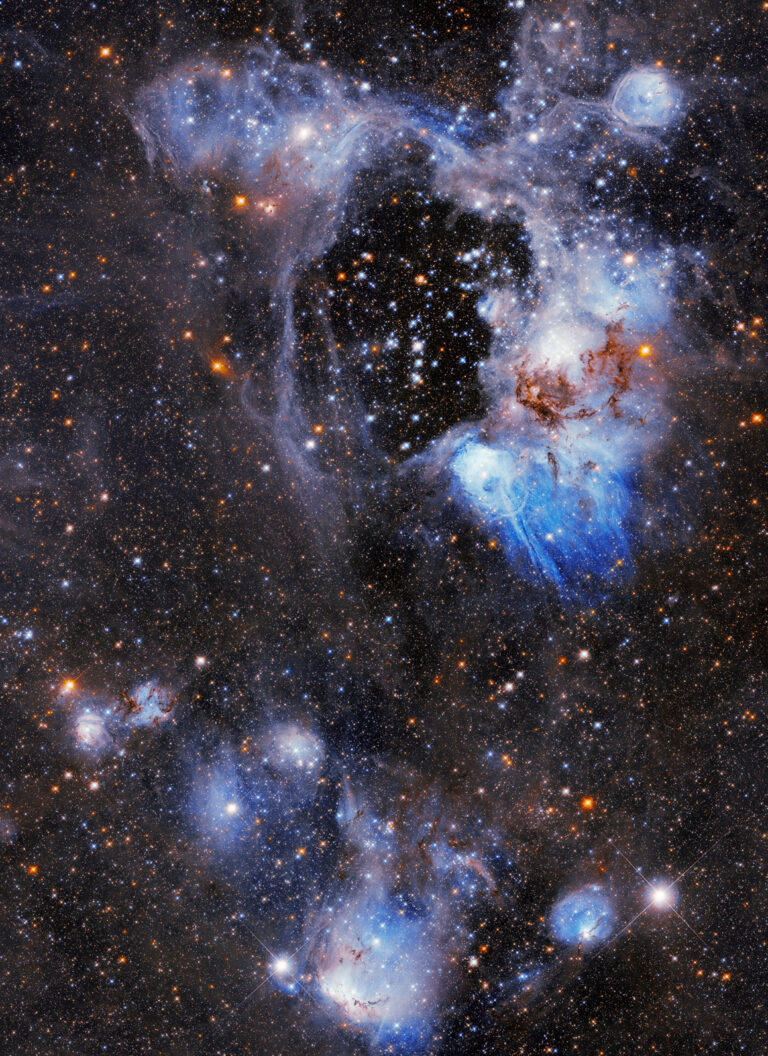广阔的光线
影像来源:X-ray: NASA/CXC/SAO; Optical: NASA/STScI, Palomar Observatory, DSS; Radio: NSF/NRAO/VLA; H-Alpha: LCO/IMACS/MMTF NASA及其国际合作伙伴最近发射的詹姆斯·韦伯太空望远镜(韦伯)和X射线成像偏振探测仪(IXPE)极好地提醒人们,宇宙以多种不同的形式发射光或能量。为了全面研究宇宙物体和现象,科学家需要能够探测整个电磁波谱的望远镜。 这个画廊提供了一些例子,展示了来自地面和太空中的望远镜的不同类型的光的组合方式。这些选择的共同点是来自NASA钱德拉X射线天文台的数据,说明X射线(由非常热和高能的过程发出)是如何在整个宇宙中被发现的。 宝瓶座R 这个天体实际上是一对恒星:一颗在相对低温下稳定燃烧的白矮星和一颗高度可变的红巨星。当它们相互环绕时,白矮星将红巨星的物质拉到它的表面。随着时间的推移,这些物质积累到一定程度,就会引发爆炸。天文学家在最近几十年里已经看到过这样的爆发。从NASA哈勃太空望远镜观察到的壮观结构(红色和蓝色)中,可以看到更早的爆发证据。来自钱德拉的X射线数据(紫色)显示了来自白矮星的喷流是如何撞击它周围的物质并产生冲击波,类似于超音速飞机的音爆。 仙后座A 钱德拉对仙后座A超新星遗迹的观测表明,爆炸恒星中的单个元素是如何被抛入太空的。在这张照片中,X射线显示元素硅(红色)、硫(黄色)、钙(绿色)和铁(浅紫色)。遗迹边缘的蓝色显示了爆炸向外传播时产生的冲击波。这张图片还添加了一层来自美国国家科学基金会卡尔·央斯基甚大天线阵(深紫色、蓝色和白色)的仙后座A的无线电数据,以及一张来自哈勃望远镜(橙色)的光学图像。与X射线一样,无线电波可以穿透位于地球和仙后座A之间的厚厚的气体和尘埃云,提供关于这个著名恒星爆炸的额外信息。 吉他星云 在过去十年左右的时间里,天文学家们一直对高速移动的脉冲星(也就是旋转的中子星)的一些X射线喷流的排列感到困惑,这些喷流以奇怪的、意想不到的角度射向星际空间。这就是天文学家通过PSR B2224+65观测到的,PSR B2224+65是一颗脉冲星,因其在光学光(蓝色)下的形状而被称为“吉他星云”。钱德拉捕捉到的X射线流(粉红色)几乎垂直于吉他状结构,源自脉冲星的磁极。 阿贝尔2597 星系团是宇宙中由引力维系的最大结构,是包含单个星系、大量热气体和暗物质的动态环境。通常情况下,星系团中心的巨大黑洞可以帮助推动其行为。在阿贝尔2597星系团中,一个巨大的中央超大质量黑洞正在向外推动气体,并在其中产生气泡或空洞。这张阿贝尔2597的合成图像合成图像包括来自钱德拉的X射线(蓝色),来自数字化巡天(橙色)的光学数据,以及来自智利拉斯坎帕纳斯天文台的光学光中氢原子的发射(红色)。 NGC 4490 当两个星系在合并的过程中,引力的相互作用会触发恒星形成波。NGC 4490就是这种情况,这是一个螺旋星系,它与右上方一个较小的星系相撞,但在这张图片中没有看到。科学家们认为,这两个星系已经有了最亲密的接触,现在正在彼此分离。一些点状的X射线源代表星系内的恒星质量黑洞和中子星。在这张NGC 4490的图像中,钱德拉的X射线(紫色)与哈勃的光学图像(红色、绿色和蓝色)相结合。 NASA的马歇尔太空飞行中心管理钱德拉计划。史密森天体物理天文台的钱德拉X射线中心在马萨诸塞州的剑桥控制科学运作,并在马萨诸塞州的伯灵顿控制飞行运作。 阅读更多来自NASA德拉X射线天文台的信息。 如欲了解更多钱德拉图片、多媒体和相关资料,请访问: http://www.nasa.gov/chandra 参考来源: https://www.nasa.gov/mission_pages/chandra/news/an-expanse-of-light.html


